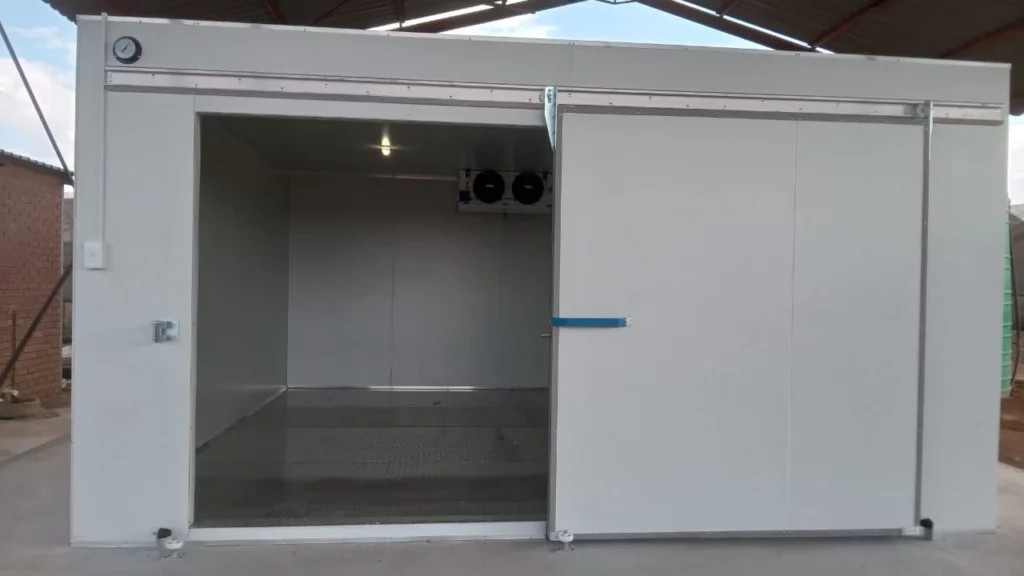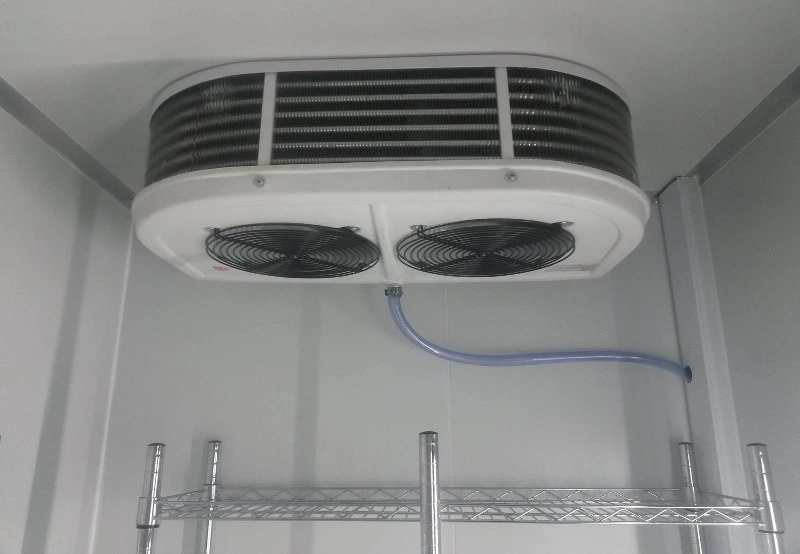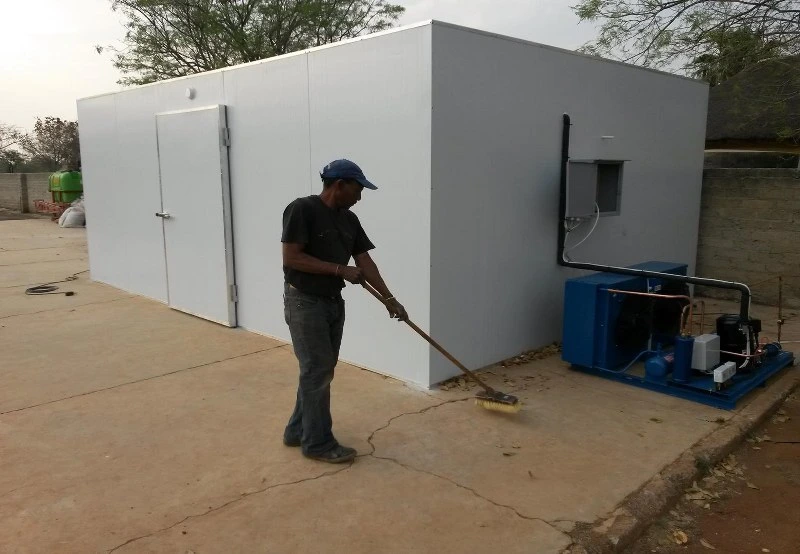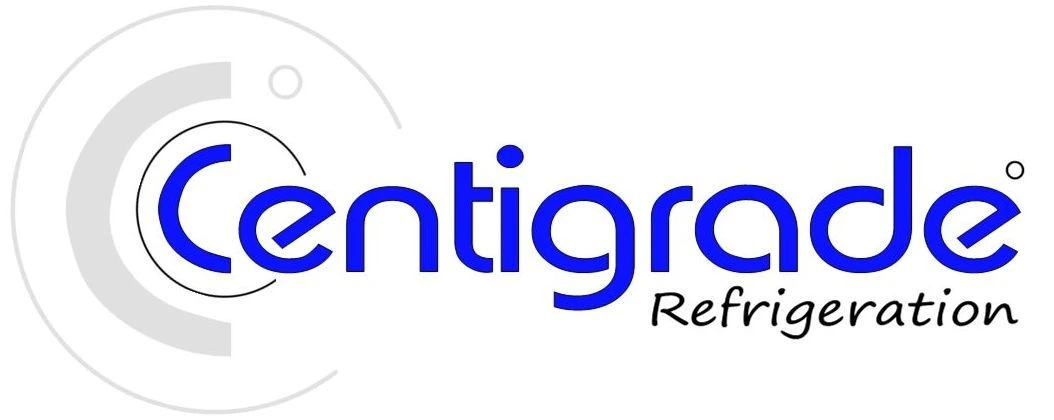Cold Room maintenance

Cold rooms are crucial in various industries, from food and beverage to pharmaceuticals, agriculture, and more. They ensure that products are kept at optimal temperatures, preserving their quality and safety. However, cold room maintenance is crucial for its effective functioning and efficiency. Neglecting maintenance can lead to unexpected breakdowns, increased energy consumption, and costly repairs. This comprehensive guide will cover routine maintenance tasks, signs that your cold room needs servicing, common issues and how to prevent them, and how Centigrade’s cold room maintenance services can help you keep your system running smoothly.
Routine Maintenance Tasks

Inspecting and Cleaning Condenser Coils
Condenser coils work by expelling heat from the refrigerant. When these coils are dirty or blocked, they cannot efficiently release heat, causing the refrigeration unit to work harder. This leads to several issues:
- Reduced Efficiency: The cooling system must operate longer and harder, increasing energy consumption and utility costs.
- Overheating: If the coils cannot expel heat properly, the system can overheat, which may cause components to fail.
- System Breakdowns: Continuous operation under strain due to blocked coils can lead to premature wear and potential system failures.
By keeping the condenser coils clean, you can improve the cooling efficiency, reduce operating costs, and prolong the lifespan of the cold room equipment.
How to Inspect Condenser Coils
Regular inspection of the condenser coils helps identify dirt buildup and any potential issues early. Here are steps to ensure effective inspection as part of the cold room maintenance:
Visual Inspection
- Turn Off the Power: Always ensure the cold room unit is turned off and disconnected from the power source before starting any inspection.
- Check for Dirt and Debris: Look for visible signs of dust, grime, or obstructions on the coils. If the coils appear discoloured or covered in dust, they likely need cleaning.
- Inspect for Physical Damage: Check for signs of wear, such as bent or damaged fins on the coils. Bent fins can obstruct airflow and reduce efficiency.
Check Door Seals and Gaskets
Door seals and gaskets are crucial in any cold room as the first defence against temperature fluctuations. These seals are designed to create a tight barrier when the door is closed, preventing cold air from escaping and warm air from entering. Maintaining the integrity of door seals and gaskets is essential for the following reasons:
Energy Efficiency: Effective seals reduce the workload on the refrigeration system, leading to lower energy consumption. Cold air can escape if seals are damaged or worn, prompting the system to run longer and harder to maintain the desired temperature.
Temperature Stability: Proper seals help maintain a consistent internal temperature, crucial for preserving perishable goods. Fluctuations in temperature can compromise the quality and safety of stored products.
Prevention of Moisture Buildup: Damaged seals can allow moisture-laden air to enter the cold room, leading to condensation, ice buildup, and potential mould growth. This affects the environment inside the cold room and increases the risk of product spoilage.
Monitor Temperature Settings
Maintaining the correct temperature in cold room maintenance ensures product safety, quality, and longevity. Fluctuations in temperature can lead to spoilage, compromise the integrity of sensitive items, and ultimately result in financial losses. Here’s an in-depth look at the importance of monitoring temperature settings as part of cold room maintenance, best practices, and advanced solutions available to maintain optimal conditions in cold room maintenance.
Importance of Maintaining Correct Temperature
Product Safety: Different products have specific temperature requirements. For instance, perishable food items, pharmaceuticals, and chemicals must be stored within designated temperatures to prevent spoilage and ensure safety. For example:

Food Products: Most perishables should be stored at temperatures between 0°C to 5°C
Pharmaceuticals: Many medications require storage at controlled temperatures, typically between 2°C to 8°C
Quality Preservation: Proper temperature control helps preserve the quality, texture, and flavour of food and other perishable items. For instance, when exposed to higher temperatures, fruits and vegetables lose their freshness and nutritional value.
Clear Drain Lines
In a cold room, drain lines are essential components designed to remove excess water and condensation that can accumulate because of temperature fluctuations and humidity levels. In cold room maintenance, proper drainage is crucial to maintaining an optimal environment for stored goods, preventing water damage, and ensuring the overall efficiency of the refrigeration system.
Why Clogged Drain Lines Are a Problem
1. Water Buildup: Water can accumulate inside the cold room when drain lines become clogged. This excess moisture can create a range of problems, including:
- Mould Growth: High humidity levels can lead to mould and mildew, which pose health risks and can spoil products.
- Slipping Hazards: Pooled water can create slippery surfaces, increasing the risk of accidents in the workspace.
- Equipment Damage: Water buildup can damage refrigeration components, leading to costly repairs or replacements.
- Temperature Fluctuations: Excess moisture can affect the system’s cooling efficiency, causing temperature fluctuations that jeopardise the quality of stored items.
2. Odour Issues: Standing water can lead to unpleasant odours, particularly if organic materials or spills contribute to the problem.
3. Corrosion and Structural Damage: Continuous water exposure can lead to corrosion of metal components and structural damage to the cold room itself, affecting its integrity and lifespan.
Regular Inspection and Cleaning of Drain Lines
To prevent clogs and ensure that drain lines function properly, regular inspection and cleaning are essential. Here’s a breakdown of the recommended procedures with regard to cold room maintenance:
Routine Inspection:
During regular cold room maintenance, check the drain lines visually for signs of debris buildup, kinks, or obstructions.
Use a flashlight to inspect hard-to-see areas and identify potential issues before they become significant problems.
Check Refrigerant Levels
Refrigerant plays a critical role in the cooling process of a cold room. It absorbs heat from the interior and releases it outside, maintaining a consistent and cold environment for perishable goods. Keeping refrigerant levels at the proper capacity is essential for the efficient operation of the cooling system. Here’s a detailed look at the importance of checking refrigerant levels, potential issues arising from low levels, and best practices for routine checks. Inspect Fans and Motors.
The fans and motors inside the cold room help circulate air, ensuring even cooling throughout the space. Ensure they are functioning properly and listen for any unusual noises that may indicate a need for servicing.
. Importance of Maintaining Proper Refrigerant Levels
- Efficiency of the Cooling System: Adequate refrigerant levels ensure the system can effectively absorb and release heat. If the refrigerant is low, the system struggles to maintain the desired temperature, leading to inefficient cooling and higher energy consumption.
- Preventing System Overwork: When refrigerant levels drop, the compressor has to work harder to achieve the same cooling effect. This increased workload can lead to overheating, higher energy bills, and increased wear and tear on the compressor.
- Avoiding Damage: Operating a cooling system with low refrigerant can cause significant damage over time. The compressor may overheat and fail, requiring costly repairs or replacements. Additionally, other components, such as evaporator coils, may sustain damage from prolonged stress.
- Environmental Impact: If released into the atmosphere, refrigerants can be harmful to the environment. Regular checks can help identify leaks early, minimizing the potential for environmental damage and ensuring compliance with regulations regarding refrigerant use.
Signs of Low Refrigerant Levels
Recognizing the signs of low refrigerant levels early can help prevent further issues. Common indicators include:
- Inconsistent Temperature: If the cold room is unstable, it could be due to insufficient refrigerant levels.
- Ice Buildup: Ice forming on the evaporator coils can be a sign of low refrigerant, as it prevents the coils from effectively absorbing heat.
- Unusual Noises: If you hear loud or unusual noises from the compressor, it may indicate that it is working harder than normal due to low refrigerant levels.
- Increased Energy Bills: A sudden rise in energy consumption can indicate the system overworking to maintain the desired temperature.
Maintaining proper refrigerant levels in your cold room is vital for ensuring efficiency, preventing damage, and safeguarding the integrity of the stored products. By implementing routine checks, monitoring for signs of low levels, and addressing any issues promptly, you can extend the life of your refrigeration system and enhance its performance. Centigrade offers comprehensive maintenance services, including refrigerant checks and repairs, to help you maintain a reliable and efficient cold storage environment. If you have concerns about your cold room’s refrigerant levels or require professional assistance, don’t hesitate to contact Centigrade for expert support.
Signs That Your Cold Room Needs Servicing

While regular maintenance can prevent many issues, it’s also important to be aware of the signs that your cold room may need professional servicing:
Inconsistent Temperatures
If you notice fluctuations in temperature or certain areas of the cold room that are warmer than others, it may indicate a problem with the cooling system. This could be due to refrigerant leaks, faulty thermostats, or blocked fans.
Increased Energy Consumption
A sudden spike in energy bills can signal that your cold room is working harder than usual to maintain its temperature. Issues like dirty condenser coils, poor insulation, or malfunctioning components can cause this.
Frost or Ice Buildup
Frost or ice buildup on the evaporator coils, inside the unit, or around the door seals is a common sign of a problem. This could mean that the defrost system is malfunctioning or that the door seals are leaking.
Unusual Noises
Grinding, buzzing, or rattling noises from your cold room’s equipment may indicate a problem with the compressor, fans, or other mechanical parts. These sounds shouldn’t be ignored, as they can lead to more significant issues if not addressed.
Water Leaks or Puddles
If you notice water pooling inside or outside the cold room, it could be a sign of a clogged drain line, high humidity levels, or even a leak in the cooling system. It’s important to identify and fix the source of the water to prevent further damage.
Common Issues and How to Prevent Them
Understanding common cold room issues and how to prevent them can save you time, money, and stress:
Refrigerant Leaks
Low refrigerant levels can lead to inefficient cooling and higher energy consumption. Regularly inspect refrigerant lines and fittings for signs of leaks and ensure they are sealed properly. Preventative maintenance from professionals can help identify and fix leaks early.
Door Seal Damage
As mentioned, damaged door seals can cause air leaks, leading to temperature fluctuations and higher energy costs. Clean the seals regularly and check for cracks, gaps, or tears to prevent this. Replace damaged seals promptly.
Evaporator Coil Freezing
Low refrigerant levels, poor airflow, or issues with the defrost system can cause frozen evaporator coils. Prevent this by keeping the coils clean, ensuring proper airflow, and scheduling regular maintenance to check the refrigerant levels.
Blocked Drain Lines
Water pooling inside the cold room can result from blocked drain lines. Clear drain lines periodically to prevent clogs, and check for proper drainage during routine maintenance.
Overheating Motors
Overheating motors can lead to complete system failure. Regularly inspect fans and motors, clean them, and ensure they are functioning efficiently to help prevent overheating and prolong the life of your equipment.
Conclusion
At Centigrade, we understand the importance of reliable cold storage and are committed to providing comprehensive maintenance services to keep your cold rooms operating at their best. Our team of experienced technicians offers:
Ensure the longevity and efficiency of your cold room with Centigrade Refrigeration’s expert maintenance services. Our team is dedicated to helping you prevent costly breakdowns, reduce energy consumption, and keep your products at their best. Don’t leave your cold room’s performance to chance— Contact Centigrade Refrigeration today to schedule a maintenance check or consultation and experience peace of mind with every cooling solution!
